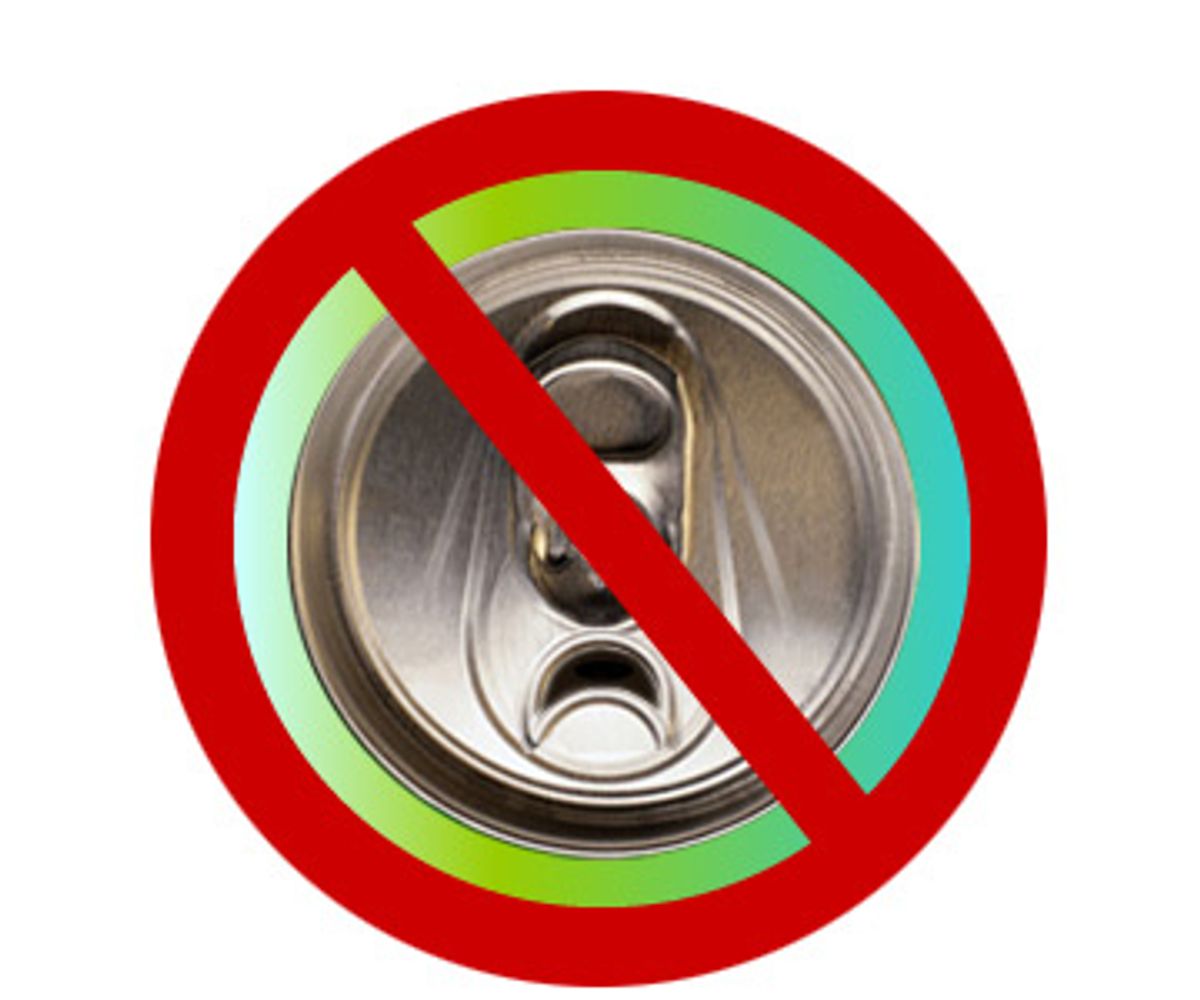Dear Pablo,
Assuming that one can't break the habit of drinking pop, what kind of container is more environmentally friendly, aluminum cans or plastic bottles (2 liter)?
Aluminum cans take a great deal of energy and natural resources to process and transport. Aluminum begins as bauxite ore, is refined into aluminum oxide, and ends up as blocks of aluminum, a supply chain that can take it halfway around the planet. Next the blocks are heated and turned into large rolls of aluminum before being transported yet again. The sheets are stamped and manufactured into cans, which are then filled and distributed to stores. After weeks or months of travel and processing, the aluminum can is used for maybe a few minutes and discarded.
Plastic bottles are made from PET (polyethylene terephthalate) and have a less complicated supply chain, which involves making pellets from petroleum derivatives and then blow-molding the bottles. Plastic contains more petroleum, but aluminum requires more energy because of its higher melting point and complex processing. The manufacture of PET requires about 6.5 kilograms (kg) of petroleum inputs per kilogram of plastic. Most of the petroleum, about 5.5 kg, does not end up in the final bottle. It is consumed in manufacturing and is out-put in the form of greenhouse gas emissions (about 16.5 kg).
Both types of container are frequently made from virgin materials. The U.S. recycles about 30 percent of plastic bottles but does better with aluminum cans. It recycles over half of all aluminum cans at a rate of 105,748 per minute, or 55.6 billion per year. This means that Americans use around one can per day on average. Recycling an aluminum soda can saves enough energy to run a television for three hours or a 100-watt light bulb for four hours. This is equal to 0.4 kilowatt-hours or 0.28 kg of carbon dioxide.
Since consumers are ultimately responsible for the production of a can or bottle through their purchases, the embodied energy and resulting emissions are their responsibility as well. Consumers have little control over what happens to the materials after they discard them, so we will attribute the emissions reduction from recycling to the demand side of the recycling system rather than the supply (rewarding consumers who purchase recycled-content materials or packaging). Analyzing with this method rewards consumers who buy less, rather than falsely rewarding consumers who consume a great deal but recycle. Recycling reduces environmental impact but does not eliminate it as well as does not consuming in the first place.
The amount of petroleum used in making the 50-gram (g) and 2-liter bottle is around 325 g, and the resulting greenhouse gas emissions from its manufacture are around 825 g. An aluminum can made from virgin materials results in the emissions of 280 g of carbon dioxide. Does this mean that the can is better? Well, keep in mind that the bottle holds more beverage, so we need to take that into account. You would need to buy 5.6 cans, almost a full six-pack, to equal the volume of the bottle. The 5.6 cans would be responsible for 1,568 g of carbon dioxide emissions. So it looks like the 2-liter bottle results in about half of the greenhouse gas emissions of the equivalent amount of cans. Is this the end of the story? What about transportation emissions?
Let's assume that both beverage containers are filled in the same facility and shipped to the store with the same truck. The bottle weighs 2.05 kg when full (2 liters plus 50 g) and the 5.6 cans weigh 2.084 kg (2 liters plus 84 g). This means that the cans require slightly more fuel to transport than the bottles. That's two strikes against cans. How about a third strike? Soda bottles often find a second life in my favorite winter garments, as some clothing brands manufacture fleece in part from recycled plastic, which is melted into pellets and extruded into fine fibers. Try doing that with aluminum.

Shares